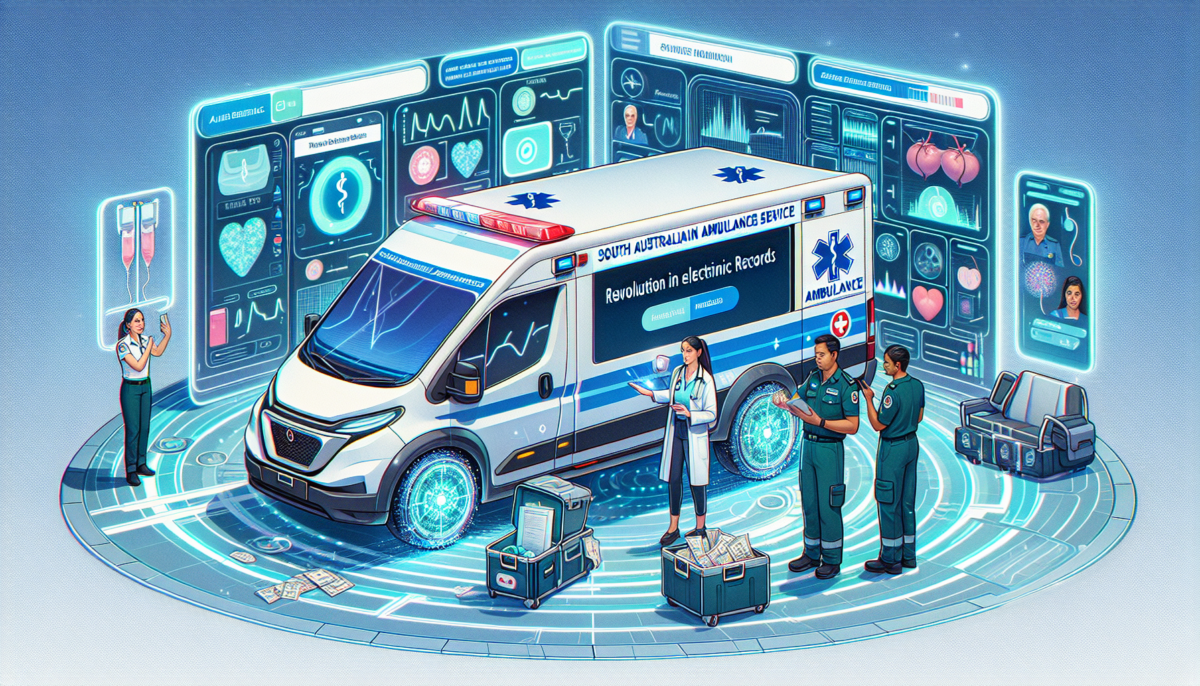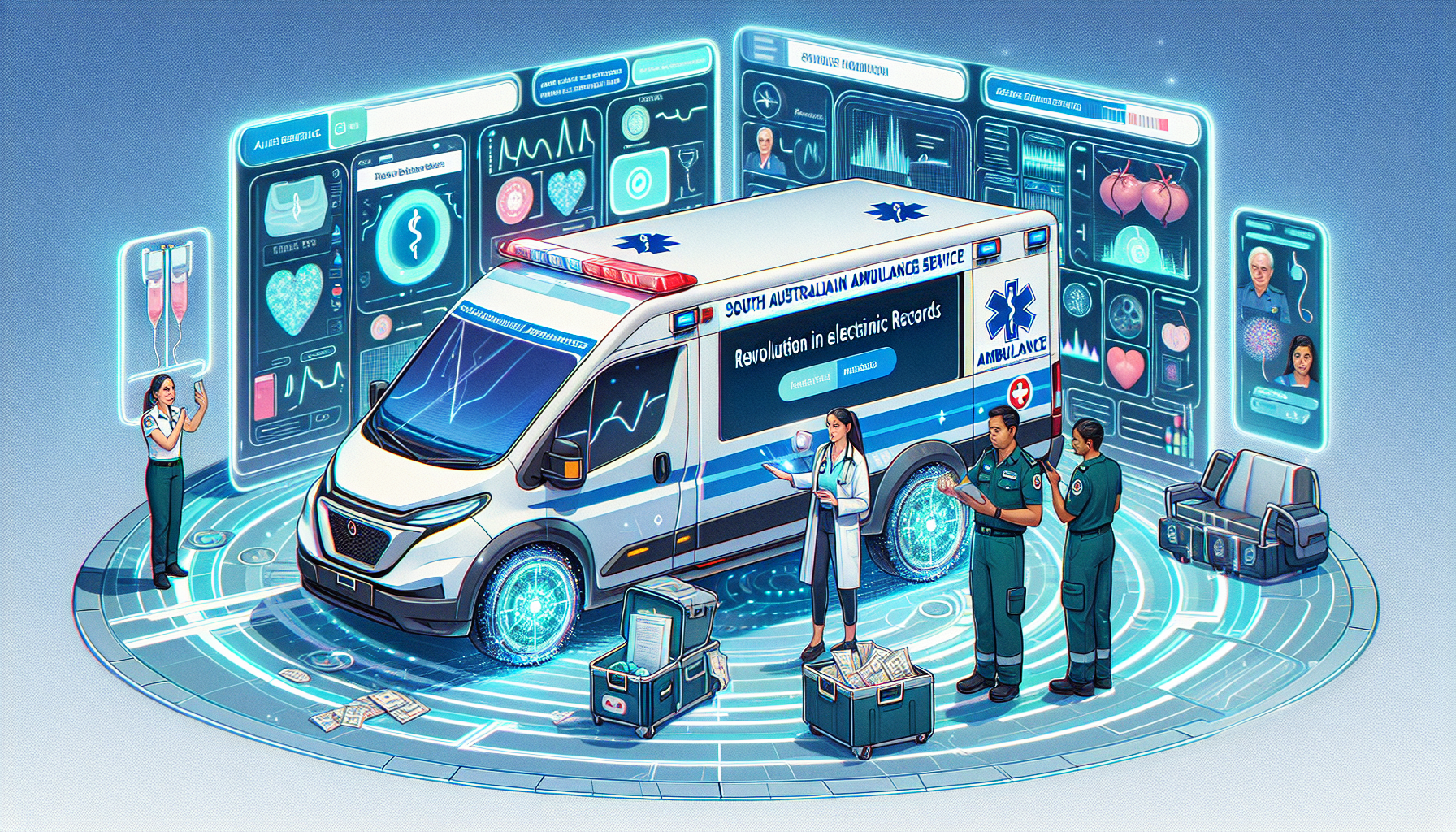SA Ambulance Service Unveils Electronic Records Revolution
We independently review everything we recommend. When you buy through our links, we may earn a commission which is paid directly to our Australia-based writers, editors, and support staff. Thank you for your support!

Quick Overview: Essential Points
- SA Ambulance Service is transitioning to a cloud-driven electronic patient care record (ePCR) system.
- This $16.2 million, decade-long project is being created by health IT firm Dedalus.
- The system will utilize Microsoft Azure for hosting and will integrate with hospital electronic medical records in the future.
- Traditional handwritten clinical case cards will be replaced with electronic data entry accessible in real-time.
- The implementation is anticipated to commence in mid-2026, covering the service’s fleet of 500 vehicles.
- This initiative is included in the SA Government’s 2024-25 State Budget, which has allocated $23.5 million for the upgrade.
The Transition to Cloud-Based Healthcare Solutions
The South Australian Ambulance Service (SAAS) is making a considerable technological leap by deploying a cloud-driven electronic patient care record (ePCR) system. This advancement will replace the previously used handwritten clinical documentation, simplifying the process of capturing and managing patient data.
Overseen by health IT provider Dedalus under a 10-year, $16.2 million agreement, the ePCR system is crafted to adhere to rigorous clinical and governance standards. By utilizing the features of Microsoft Azure, the system guarantees reliability, scalability, and safety for critical patient information.

Revamping Ambulance Operations
At present, ambulance teams in South Australia depend on handwritten clinical case cards, which need to be digitized and uploaded later. The new ePCR system will enable paramedics to input patient details electronically while on the go, reducing redundancies and accelerating the availability of data for medical professionals.
This initiative is poised to bolster operational efficiency and enhance patient outcomes by ensuring that accurate and prompt information is easily accessible. With plans for future integration into hospital electronic medical records, continuity of care will see marked improvements.
Implementation Timeline
The rollout of the ePCR system is set to kick off in mid-2026 and will encompass the SAAS’s 500-vehicle fleet. This timeline allows for comprehensive development and testing to confirm that the system satisfies all clinical and operational criteria prior to its launch.
This project is a pivotal part of the South Australian Government’s extensive healthcare enhancement strategy, backed by a $23.5 million commitment in the 2024-25 State Budget for revamping the ambulance service’s patient record system.
A Revolutionary Initiative
Chris Picton, South Australia’s Minister for Health and Wellbeing, has labeled the ePCR system as a “revolutionary” advancement for the state’s ambulance service. He highlighted the transformative potential of this initiative to modernize healthcare delivery and bring ambulance services up to date with contemporary standards.
As healthcare systems around the globe increasingly embrace digital solutions, this initiative positions South Australia as a frontrunner in harnessing technology to elevate public health services.
Conclusion
The South Australian Ambulance Service is poised to transform its operations with the launch of a cloud-driven electronic patient care record system. Created by Dedalus and hosted on Microsoft Azure, the system seeks to replace handwritten records with digital, on-the-go data entry. This initiative is part of the SA Government’s wider investment in healthcare modernization, with $23.5 million allocated for enhancement of patient record systems. The rollout, scheduled for mid-2026, will include the state’s 500-vehicle ambulance fleet, with plans for future integration into hospital electronic medical records as well.
Commonly Asked Questions
Q: What is the aim of the ePCR system?
A:
The electronic patient care record (ePCR) system aims to replace paper documentation with a cloud-driven solution, allowing ambulance teams to log patient data electronically while in transit. This will enhance operational efficiency and data accuracy.
Q: Who is responsible for developing the ePCR system?
A:
The system is being developed and managed by Dedalus, a prominent health IT company, under a 10-year, $16.2 million contract.
Q: When is the system expected to be put into action?
A:
The rollout is projected to start in mid-2026, after extensive development and testing to ensure it aligns with clinical and governance standards.
Q: What advantages will the system provide to patients?
A:
The ePCR system will facilitate swifter and more precise recording of patient information, enhancing continuity of care and enabling quicker access to medical records for hospital personnel.
Q: Will the ePCR system connect with hospital systems?
A:
Yes, the South Australian Government has outlined plans to link the ePCR system with hospitals’ electronic medical records in the future, further improving patient care coordination.
Q: What is the significance of Microsoft Azure in this initiative?
A:
Microsoft Azure serves as the cloud infrastructure for hosting the ePCR system, ensuring scalability, security, and reliability for managing patient information.
Q: How does this project align with the SA Government’s healthcare plan?
A:
The ePCR initiative is part of the SA Government’s 2024-25 State Budget, which designated $23.5 million for the modernization of the ambulance service’s patient record system as an element of a broader healthcare enhancement strategy.
